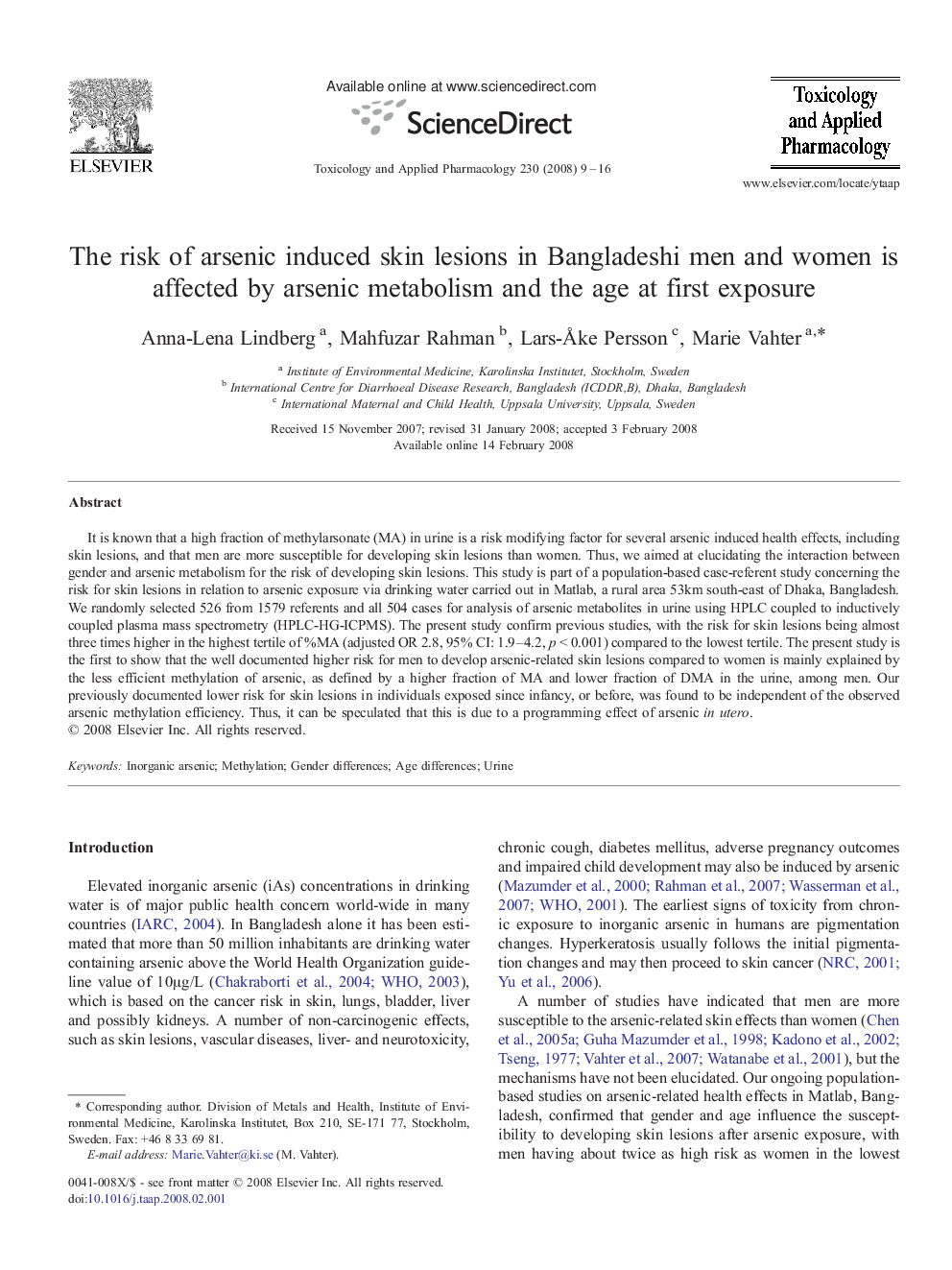| Article ID | Journal | Published Year | Pages | File Type |
|---|---|---|---|---|
| 2571101 | Toxicology and Applied Pharmacology | 2008 | 8 Pages |
Abstract
It is known that a high fraction of methylarsonate (MA) in urine is a risk modifying factor for several arsenic induced health effects, including skin lesions, and that men are more susceptible for developing skin lesions than women. Thus, we aimed at elucidating the interaction between gender and arsenic metabolism for the risk of developing skin lesions. This study is part of a population-based case-referent study concerning the risk for skin lesions in relation to arsenic exposure via drinking water carried out in Matlab, a rural area 53km south-east of Dhaka, Bangladesh. We randomly selected 526 from 1579 referents and all 504 cases for analysis of arsenic metabolites in urine using HPLC coupled to inductively coupled plasma mass spectrometry (HPLC-HG-ICPMS). The present study confirm previous studies, with the risk for skin lesions being almost three times higher in the highest tertile of %MA (adjusted OR 2.8, 95% CI: 1.9-4.2, p < 0.001) compared to the lowest tertile. The present study is the first to show that the well documented higher risk for men to develop arsenic-related skin lesions compared to women is mainly explained by the less efficient methylation of arsenic, as defined by a higher fraction of MA and lower fraction of DMA in the urine, among men. Our previously documented lower risk for skin lesions in individuals exposed since infancy, or before, was found to be independent of the observed arsenic methylation efficiency. Thus, it can be speculated that this is due to a programming effect of arsenic in utero.
Related Topics
Life Sciences
Environmental Science
Health, Toxicology and Mutagenesis
Authors
Anna-Lena Lindberg, Mahfuzar Rahman, Lars-Ã
ke Persson, Marie Vahter,
